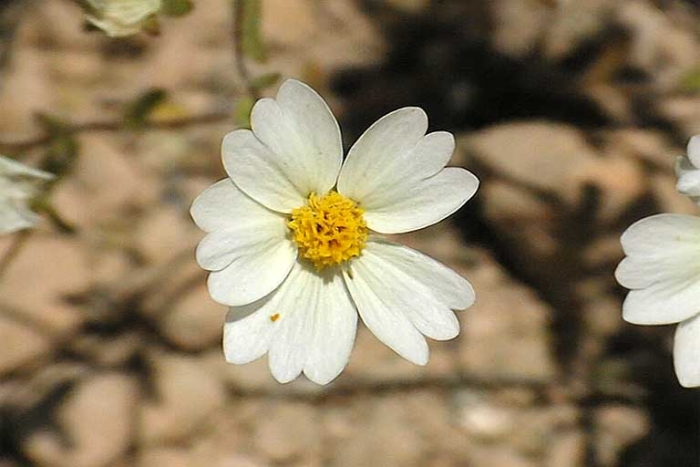Whitedaisy Tidytips
(Layia glandulosa)
Whitedaisy Tidytips (Layia glandulosa)
/
/

Larry Blakely
Public Domain


































































Estimated Native Range
Summary
This species is valued for its bright, daisy-like flowers that bloom in spring, adding a splash of color to wildflower gardens, meadows, and naturalized areas. It is often used in restoration projects and xeriscaping due to its low water requirements. Whitedaisy Tidytips thrives in full sun and is tolerant of a range of soil types, including those with medium, fast, or slow drainage. While it is generally easy to maintain, it can be susceptible to fungal diseases in overly moist conditions. Gardeners should be aware that it may self-seed prolifically under favorable conditions, which can be both a benefit for naturalistic plantings and a concern for managed gardens.CC BY-SA 4.0
Plant Description
- Plant Type: Herb
- Height: 1-3 feet
- Width: 0.167-0.5 feet
- Growth Rate: Moderate
- Flower Color: White, Yellow
- Flowering Season: Spring
- Leaf Retention:
Growth Requirements
- Sun: Full Sun
- Water: Low
- Drainage: Medium, Fast
Common Uses
Bee Garden, Bird Garden, Butterfly Garden, Drought Tolerant, Edible*Disclaimer: Easyscape's listed plant edibility is for informational use. Always verify the safety and proper identification of any plant before consumption., Low Maintenance, Showy Flowers
Natural Habitat
Native to California’s vernal pools, grasslands, and coastal scrub areas
Other Names
Common Names: White Layia, Glandular Layia, White Daisy Tidy-Tips, White Tidy-Tips, White Tidytips
Scientific Names: , Layia glandulosa, Layia glandulosa subsp. glandulosa, Layia glandulosa subsp. lutea, Layia douglasii, Layia glandulosa var. glandulosa, Layia hispida, Blepharipappus glandulosus, Layia glandulosa subsp. typica, Layia glandulosa var. hispida
GBIF Accepted Name: Layia glandulosa (Hook.) Hook. & Arn.